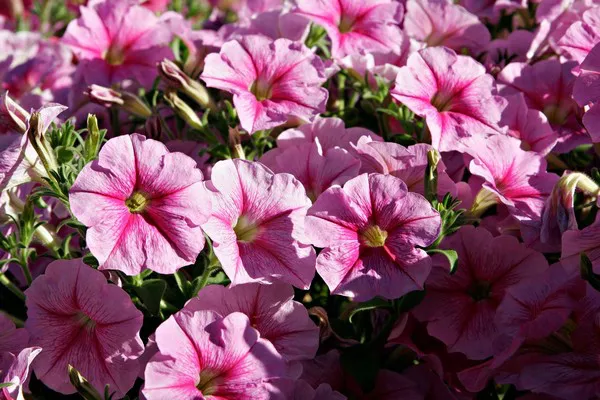Drying flowers is a time-honored tradition that allows one to preserve the beauty and sentimental value of flowers long after they have been cut. Among the various methods available for drying flowers, using silica gel is one of the most effective ways to retain their original color and shape. This method is particularly suitable for delicate flowers that might lose their form or color with air drying. In this article, we will delve into the detailed process of using silica to dry flowers, offering tips and techniques for achieving the best results.
Understanding Silica Gel and Its Benefits
Silica gel is a granular, vitreous, porous form of silicon dioxide made synthetically from sodium silicate. It is commonly used as a desiccant to control local humidity to avoid spoilage or degradation of goods. Its moisture-absorbing properties make it ideal for drying flowers, as it can effectively remove moisture from petals and stems without causing them to lose their shape or color.
The benefits of using silica gel for drying flowers include:
- Color Preservation: Silica gel helps maintain the vibrant colors of the flowers.
- Shape Retention: The flowers retain their natural shape and structure.
- Efficiency: The drying process is relatively quick, taking only a few days to a week.
- Versatility: Suitable for a wide variety of flowers, including roses, lilies, and daisies.
Materials Needed for Silica Drying
To begin the process of drying flowers with silica gel, gather the following materials:
- Silica gel crystals
- Airtight container (preferably a plastic or glass container with a lid)
- Flowers of your choice
- Scissors or pruning shears
- Gloves and a dust mask (to avoid inhaling silica dust)
- Small brush or tweezers (for handling delicate flowers)
Step-by-Step Process for Drying Flowers with Silica Gel
1. Selecting and Preparing the Flowers
Choose fresh, healthy flowers that are free from damage or disease. Flowers at their peak bloom are ideal as they will retain their color and shape better. Cut the stems to a manageable length, leaving a few inches below the bloom. If you wish to keep the entire stem, ensure that it is sturdy enough to withstand the drying process.
2. Preparing the Container and Silica Gel
Fill the bottom of your airtight container with a layer of silica gel crystals, about an inch deep. This initial layer will provide a base for the flowers to sit on and ensure even drying from all sides.
3. Positioning the Flowers
Place the flowers on the layer of silica gel, ensuring they are well-spaced and not touching each other. For larger flowers, you may need to support the petals with silica gel to maintain their shape. Gradually and gently pour more silica gel over the flowers, ensuring the crystals get into all the nooks and crannies of the petals. Be careful to avoid crushing delicate parts of the flowers.
4. Covering the Flowers
Continue to add silica gel until the flowers are completely covered. This step is crucial as any exposed part of the flower may not dry properly, leading to uneven results. Ensure that the silica gel is evenly distributed around each flower.
5. Sealing and Storing the Container
Once the flowers are fully covered, seal the container with its lid. Store it in a cool, dry place away from direct sunlight. The duration for drying will vary depending on the type and size of the flowers, but generally, it takes about 2-7 days.
Checking the Drying Progress
After the recommended drying period, carefully check one flower to see if it is fully dried. The petals should feel papery and brittle, and there should be no signs of moisture. If the flowers are not completely dry, re-cover them with silica gel and let them sit for a few more days.
Removing and Cleaning the Flowers
Once the flowers are completely dried, gently remove them from the silica gel. Use a small brush or tweezers to carefully remove any remaining silica crystals from the petals. Be gentle to avoid damaging the delicate dried flowers.
Storing and Displaying Dried Flowers
Store your dried flowers in a dry, dark place until you are ready to use them. They can be used for various decorative purposes, such as in floral arrangements, shadow boxes, or as part of craft projects. To display them, consider using a vase, frame, or incorporating them into wreaths or other artistic creations.
Tips and Tricks for Successful Silica Drying
- Choosing the Right Flowers: Not all flowers dry well with silica gel. Some of the best candidates include roses, carnations, zinnias, and marigolds. Experiment with different flowers to see which ones work best for your needs.
- Handling with Care: Always handle dried flowers with care, as they are more fragile than fresh ones. Use tweezers or a soft brush to manipulate them if necessary.
- Reusing Silica Gel: Silica gel can be reused multiple times. To recharge it, spread the used silica gel on a baking sheet and bake it in an oven at 250°F (121°C) for a couple of hours, or until the crystals return to their original color.
- Creative Arrangements: Use dried flowers to create lasting floral arrangements. Combine different types and colors of flowers for a more dynamic and visually appealing display.
Conclusion
Drying flowers with silica gel is a rewarding and relatively straightforward process that allows you to preserve the beauty of your favorite blooms. By following the steps outlined in this article, you can achieve stunning results that maintain the color, shape, and intricacy of the flowers. Whether you are drying flowers for personal keepsakes, gifts, or artistic projects, using silica gel is an excellent method to explore. Enjoy the process and the lasting beauty of your dried floral creations!


